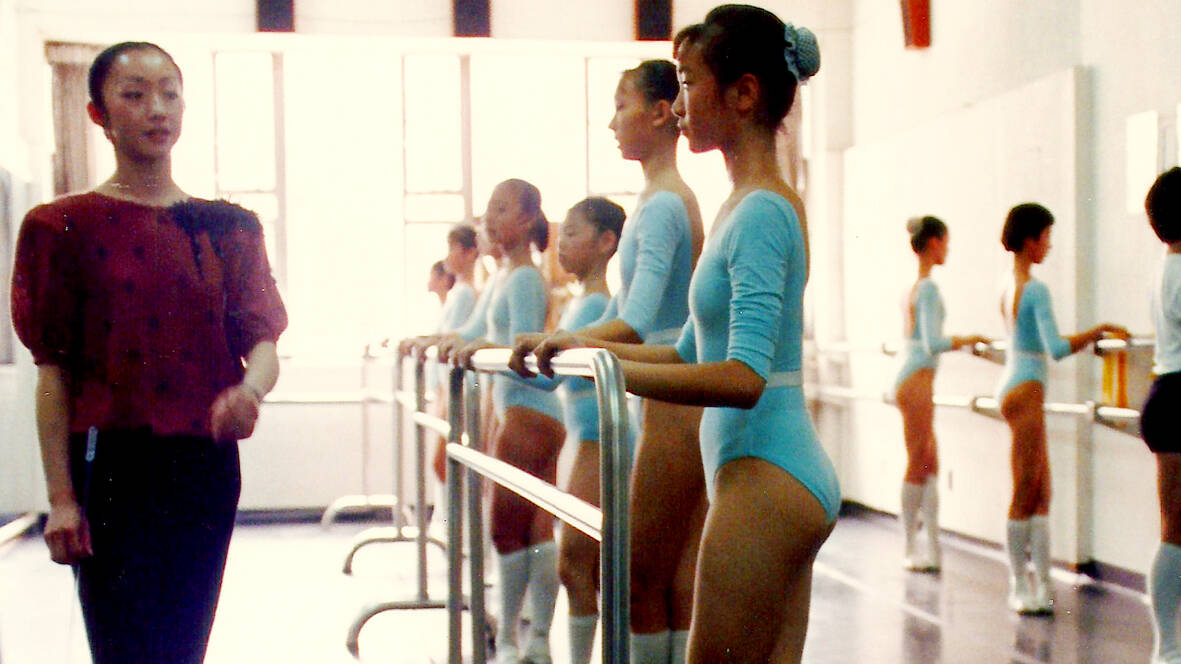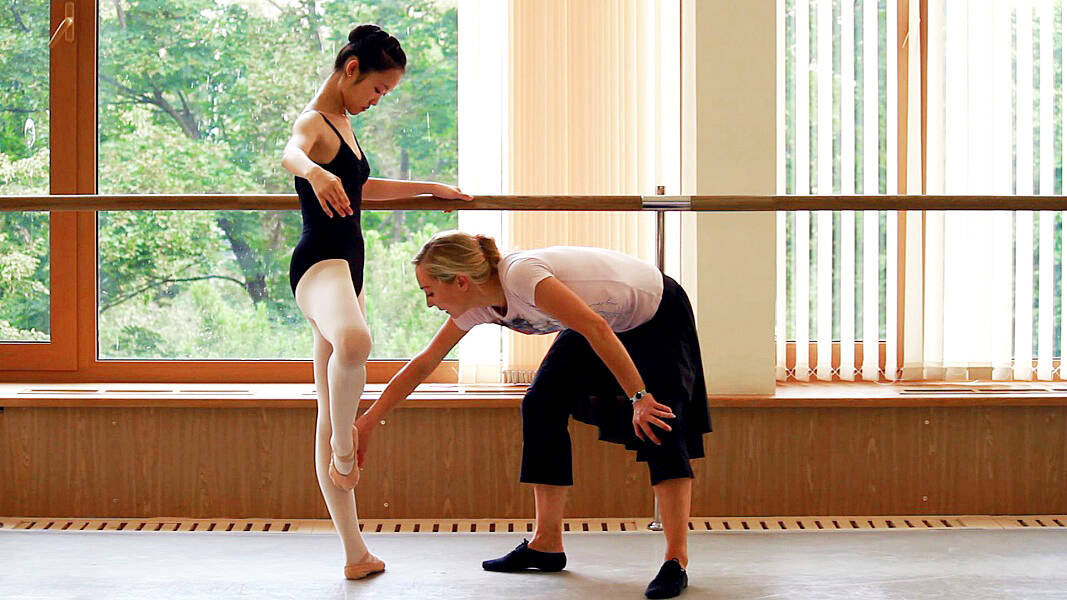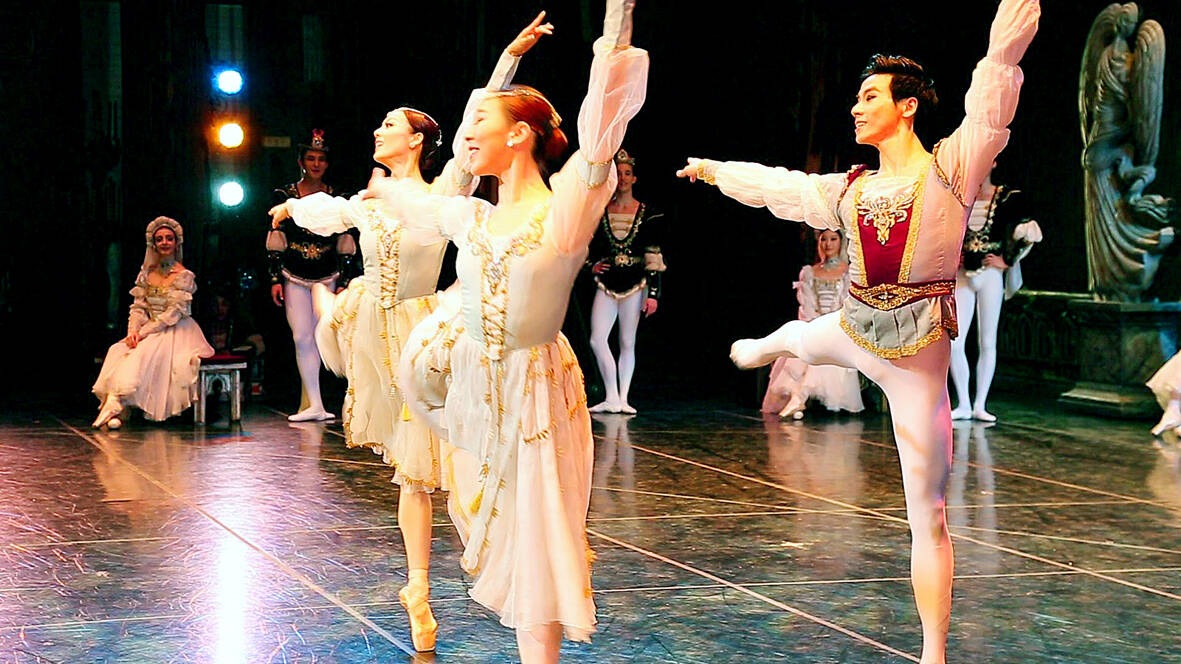Shot over nine years, the documentary Ballet in Tandem (舞徑) embodies the grace and discipline of the art form it explores, while providing a rare glimpse into the ever-struggling local scene.
Director Yang Wei-hsin (楊偉新) carefully weaves together the stories of three Taiwanese dancers, each from a different generation, into a compelling and detailed narrative that explores Taiwan’s history of ballet as well as the passion, determination and tribulations of those who aspire to a professional career.
This is Yang’s first feature-length documentary, but his experience as a video editor is evident as he melds footage of the three subjects with numerous interviews, historic footage, performances and detail shots in a cohesive and well-paced manner.

Photo courtesy of Hooray Films
What’s most impressive is the handling of emotion in the film. With such topics, it’s easy to run with the motivational, follow-your-dreams theme and end up with a sappy story that tries too hard to get the audience to cry. But the emotion in Ballet in Tandem is carefully controlled, while still being moving and deeply personal to the subjects. Yang also wisely avoids glorifying their achievements just to promote Taiwan.
While the lack of resources and career opportunities for ballet dancers in Taiwan is glaring, however, it feels like this point is emphasized over and over again in the film; it could have been pared down as the narrative slightly loses steam toward the end.
The three subjects are aptly chosen. They’re each in different stages of their careers, but it seems that the unforgiving environment has not changed all that much over four decades.

Photo courtesy of Hooray Films
Lee Chiao (李巧) is the godmother of Taiwanese ballet; pretty much learning the craft on her own when there were barely any resources. The history of ballet in Taiwan is told organically through her experiences, which includes starting Taiwan’s first professional ballet company in 1981 and the Four Seasons dance school for elementary schoolers in 1986.
As a soloist in a South Korean ballet company, Liang Shih-huai (梁世懷) is one of the few to thrive in the field, but he only got there through sheer persistence and grueling training. Ballet wasn’t even his best skill in school, but somehow he was single-mindedly driven to pursue it despite warnings from his teachers and countless rejections from international academies.
The youngest subject, Kuo Jung-an (郭蓉安), is a promising student at a performing arts high school who receives the opportunity to attend a short-term program at the elite Bolshoi Ballet Academy in Russia.

Photo courtesy of Hooray Films
The three deal with much adversity and uncertainties over the years of shooting, and their highs and lows are deftly organized into a clear dramatic arc that’s easy to follow despite shifting back and forth in time and place.
While Ballet in Tandem should bring much attention to the plight of ballet, it’s the behind-the-scenes shots of the relentless work the dancers put in for an uncertain future that lingers in the mind. They repeat the same moves over and over again until their feet are covered with blisters, suffer serious injuries and go through painful-looking stretching exercises, yet this is the only thing they ever want to do. Few have this sort of determination, and that’s what makes the story fascinating and touching.

One of the biggest sore spots in Taiwan’s historical friendship with the US came in 1979 when US president Jimmy Carter broke off formal diplomatic relations with Taiwan’s Republic of China (ROC) government so that the US could establish relations with the People’s Republic of China (PRC). Taiwan’s derecognition came purely at China’s insistence, and the US took the deal. Retired American diplomat John Tkacik, who for almost decade surrounding that schism, from 1974 to 1982, worked in embassies in Taipei and Beijing and at the Taiwan Desk in Washington DC, recently argued in the Taipei Times that “President Carter’s derecognition

This year will go down in the history books. Taiwan faces enormous turmoil and uncertainty in the coming months. Which political parties are in a good position to handle big changes? All of the main parties are beset with challenges. Taking stock, this column examined the Taiwan People’s Party (TPP) (“Huang Kuo-chang’s choking the life out of the TPP,” May 28, page 12), the Democratic Progressive Party (DPP) (“Challenges amid choppy waters for the DPP,” June 14, page 12) and the Chinese Nationalist Party (KMT) (“KMT struggles to seize opportunities as ‘interesting times’ loom,” June 20, page 11). Times like these can

JUNE 30 to JULY 6 After being routed by the Japanese in the bloody battle of Baguashan (八卦山), Hsu Hsiang (徐驤) and a handful of surviving Hakka fighters sped toward Tainan. There, he would meet with Liu Yung-fu (劉永福), leader of the Black Flag Army who had assumed control of the resisting Republic of Formosa after its president and vice-president fled to China. Hsu, who had been fighting non-stop for over two months from Taoyuan to Changhua, was reportedly injured and exhausted. As the story goes, Liu advised that Hsu take shelter in China to recover and regroup, but Hsu steadfastly

You can tell a lot about a generation from the contents of their cool box: nowadays the barbecue ice bucket is likely to be filled with hard seltzers, non-alcoholic beers and fluorescent BuzzBallz — a particular favorite among Gen Z. Two decades ago, it was WKD, Bacardi Breezers and the odd Smirnoff Ice bobbing in a puddle of melted ice. And while nostalgia may have brought back some alcopops, the new wave of ready-to-drink (RTD) options look and taste noticeably different. It is not just the drinks that have changed, but drinking habits too, driven in part by more health-conscious consumers and